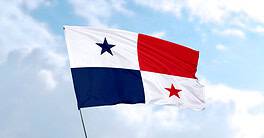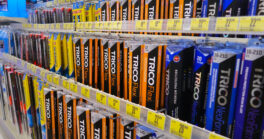Regional Report / Gcc
High oil prices keep the ball rolling, as the Gulf region’s economic growth momentum carries it through a rough patch in the stock markets.
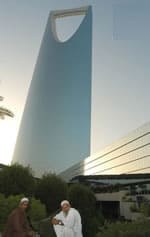 |
|
Kingdom Tower Riyadh: As capital spending rises, economic growth in the GCC will be led by a booming construction sector |
The combined gross domestic product of the GCC countries rose 18.7% in 2006 to $725 billion, according to the Washington, DC-based Institute of International Finance. The combined external surplus of the GCC was about $200 billion last year, compared to China’s $250 billion.
The petrodollars that are pouring into the Gulf as a result of high oil and gas prices are being invested in real estate, education, tourism, industry and agriculture, helping to diversify the economic base and promoting long-term growth in the private sector. Foreign direct investment is growing as well, attracted by the fast growth and a more-welcoming reception. The investment is helping to develop new cities and new industries and is creating jobs for a young, growing and energetic population. “The economies of the region are more diversified and more efficient than ever,” Eid says. “The pie is so big now, that there is plenty of opportunity for funds to be absorbed locally.”
Saudi Arabia and its fellow GCC members of Bahrain, Kuwait, Oman, Qatar and the United Arab Emirates are prospering in a region known better for its strife. The tourism and real estate booms look solid, economists say. The biggest worry is that inflation could be imported as a result of the decline in regional currencies linked to a weak dollar.
Meanwhile, regional integration is happening more slowly than some may wish, but the opportunities to participate in more than $1 trillion of investment projects planned in the next five years and the need to continue developing the region’s vast oil and gas resources outweigh any negative factors. The demand for banking services and wealth management are expanding rapidly. It is little wonder, therefore, that foreign bankers are rushing in for a piece of the action.
“Sustainable growth doesn’t mean that the boom will last forever, and it doesn’t negate cyclicality,” says Eid, speaking from his office in ANB’s headquarters on King Faisal Street in the Muraba District of the sprawling Saudi Arabian capital city. “Some segments, such as the property market, could slow, but the overall outlook is extremely positive.”
“The Saudi economy is not just about oil,” says John Coverdale, managing director of the Saudi British Bank (SABB). “It’s an economy that is waking up and developing,” he says. “There are roads and railroads to be built and airports to be refurbished. The country’s massive population requires jobs, healthcare and housing. One new school is being built in the country every day,” he notes.
Coverdale likens the current oil-based boom in the Gulf to the Asian economic miracle of the 1970s and 1980s. Saudi Arabia’s per capita gross domestic product of about $13,800 in 2006 means there is the potential for greater wealth generation for a long time to come in this country of 28 million people with a median average age of 21 years, he explains. “The government has deep enough pockets to keep spending on infrastructure projects and to keep the economy moving ahead,” he says.
Economy Rides Out Market Turmoil
Saudi Arabia is the world’s largest oil exporter and has 25% of the world’s proven petroleum reserves. Cuts in oil production to support prices and last year’s steep stock market correction dealt body blows to the Saudi economy, but it refused to be toppled. “The severity of the stock market correction the country witnessed should have brought the economy to its knees, but this did not happen,” says John Sfakianakis, chief economist of SABB, in a recent report. “The economy has been experiencing high growth rates, tantamount to a boom, since 2003, and this cushioned it against a severe downside. In fact, all of the regional economies weathered their respective market downturns remarkably well,” he says.
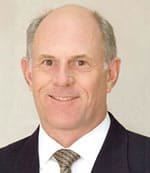 |
|
Coverdale: [Saudi] government has deep enough pockets to keep spending |
Growth in 2007 will be led by the construction sector, as capital spending continues to grow and the government moves ahead with large infrastructure projects, according to SABB. It estimates that there is more than $60 billion worth of construction projects under way in the country and that, as construction demand continues to increase, an obvious beneficiary will be the cement sector. The eight listed cement companies in Saudi Arabia have been operating at full capacity for the past two years, and a near doubling of capacity is expected by next year.
SABB estimates that inflation in Saudi Arabia currently is about 3.5% and rising. Long-term persistence of inflation above real GDP can act to slow growth, Sfakianakis says. “However, we believe that the economy does not face structural inflationary problems, and as a result long-term price pressures will probably subside,” he says.
Inflation is not a Saudi phenomenon but is GCC-wide, Sfakianakis says. Inflation in the United Arab Emirates and Qatar is in double digits. A rise in rents over the past 18 months and supply bottlenecks associated with the real estate and construction boom are pushing up prices. “Contrary to the popular view that a weak dollar will lead to imported inflation, we believe that the inflationary pressures are domestically generated,” he says. While a revaluation of the riyal would make imports cheaper, it would complicate the non-oil export diversification program as export costs rise, he says.
Single Currency Plan Falters
In a move that came as a surprise to many economists, Kuwait severed its currency link to the dollar in May and pegged its dinar to an undisclosed basket of currencies. The country linked the dinar to the dollar in 2003 to prepare for a monetary union in the GCC, including the launch of a single currency in 2010. While the other GCC countries have so far failed to follow Kuwait and abandon the dollar peg, the Kuwaiti move could delay the launch of a new currency. Oman has decided not to take part in the single currency because it does not want to restrict its monetary or fiscal policies, but it has said it may consider joining at a later date.
“Kuwait’s action will not derail the move toward a single currency,” says Ghazi Abdul-Jawad, president and chief executive of Bahrain-based Arab Banking Corporation (ABC). “This is not the first time the dinar was pegged to a basket of currencies. The country wants to align its currency with its revenue stream from oil, which is priced in dollars, and from income on its overseas investments spread across other currencies, including the British pound and the euro,” he explains. “This was a proper move by Kuwait, but it was belated,” he adds. “The country should have moved faster.”
High inflation in the region has mainly been limited to Dubai and Doha, where rental prices have risen sharply, Abdul-Jawad says. The demand for housing is so strong that some landlords have begun placing basic furniture in apartments to get around government controls on rents for unfurnished apartments. In addition, more and more people who work in Dubai are commuting daily from Sharjah and other nearby emirates where housing costs are lower.
“Economists concur that the fast growth in the region is sustainable and that there will be substantial liquidity to keep the boom going, even if the price of oil were to decline to $35 a barrel,” Abdul-Jawad says. A steep drop in the oil price seems unlikely in the face of demand from India and China, as well as worries about saber rattling and political uncertainties, he says. “Meanwhile, Uncle Sam is a hungry oil consumer,” he adds.
“The Gulf region is still very much enjoying the good times,” says Adel El-Labban, group chief executive and managing director of Bahrain-based Ahli United Bank, which has a growing GCC network. “Oil and gas prices are high, and government spending is prudent, unlike in previous booms,” he points out.
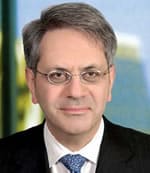 |
|
ANB’s Robert Eid: This is a Golden Age for the GCC countries |
The inflation problem in Dubai is rent-based and is passed on through higher wages and commodity prices, El-Labban says. The problem should abate, however, as newly constructed apartments and villas come onto the market, he says. “Rents will be restrained if demand does not go through the roof again,” he says.
Meanwhile, natural-gas-rich Qatar is building up its economy, basically from scratch, and is willing to accept inflation temporarily until it achieves its growth goals, according to El-Labban. “Qatar is not a mature economy growing at a galloping pace,” he explains. “It has decided to let inflation run.” The country will be spending very heavily on education and other areas in the next two to three years.
In an attempt to close the knowledge gap with the developed countries of the West, UAE prime minister Sheikh Mohammed bin Rashid Al Maktoum, who is also ruler of Dubai, in May announced the creation of a $10 billion foundation to promote education in Arab countries. At a World Economic Forum meeting at the Dead Sea resort of Southern Shuneh, Jordan, Sheikh Mohammed said the money he donated would be used to set up research centers in the region and to provide scholarships. “Our only choice is to bridge this gap as quickly as possible, because our age is defined by knowledge,” he said. “It is the ultimate form of negligence to know why we lag behind, and the dangers of doing so, and not to act.”
Saudi Aramco, the national oil company, signed a memorandum of understanding in May with Dow Chemical of the United States for the $20 billion Ras Tanura refinery upgrade and integrated petrochemical complex. The front-end engineering and design contract, which has already been put out to bid, is likely to take two years to complete.
Canada-based Alcan signed a nonbinding agreement on April 30 with Saudi Arabian mining company Ma’aden to develop a $7 billion integrated aluminum “mine-to-metal” project, including bauxite mining, alumina refining, power generation and aluminum smelting. Alcan would hold a 49% stake in the project. With competitive energy prices and local bauxite, this project has the potential to achieve one of the lowest operating costs in the industry and become one of the world’s largest smelters, Dick Evans, president and CEO of Alcan, said in a statement.
Local builder Saudi Oger recently was awarded a $132 million contract to build four residential towers in the first phase of development at the planned $50 billion King Abdullah Economic City. Meanwhile, the Saudi finance ministry has announced that it received bids from eight companies to build its new headquarters in the Al-Nakheel district of Riyadh. The complex is expected to cost nearly $300 million.
Work recently began on the King Abdullah Financial District in Riyadh, which will include the headquarters of the Capital Markets Authority, or CMA, and the stock exchange, the Tadawul, which is being converted into a joint stock company, the Saudi Financial Market Company.
Abdul Rahman Al-Rashed, president of the Council of Saudi Chambers of Commerce and Industry, told a real estate investment conference in Riyadh in May that the country’s economic boom shows no signs of tiring. “We expect the boom to continue for 20 to 25 years,” he said.
Not only is Saudi Arabia opening its economy to greater foreign investor participation in banking and finance, power generation, telecom and other industries, but it is also becoming more fully integrated into the global economy following its admission into the World Trade Organization in 2005.
In May government-controlled Saudi Basic Industries (Sabic), the largest publicly traded company in the Middle East, with a market capitalization of $80 billion, agreed to acquire the global plastics division of US-based GE for $11.6 billion. Citi was the sole financial adviser to Sabic on the transaction, which marks one of the largest acquisitions of a Western business by a Middle East-based company. Sabic previously purchased Netherlands-based DSM Petrochemicals, with extensive operations in Europe, and Huntsman Petrochemicals, based in the United Kingdom.
Meanwhile, Sabic is in the midst of a major expansion in China and the rest of Asia. It opened new offices in Beijing and Shenzhen in May, supplementing its existing offices in Hong Kong and Shanghai. China is the fastest-growing polymers market in the world, and over the next three years most of Sabic’s new petrochemical capacity will be allocated to Asian markets.
While Saudi Arabia has taken the lead in project activity, the other members of the GCC are proceeding with massive projects of their own, not only energy-related but also in real estate, transportation and tourism. Christopher Lewis, regional head of global transaction banking at HSBC in Dubai, says the region’s growing population and greater local demand, as well as an influx of immigrants and tourists, and local financial investment will sustain the region’s economic growth. “The growth will continue, although perhaps not at the same hectic pace as the last few years,” he says.
From 183,000 inhabitants in 1970, Dubai’s population has grown to 1.4 million and is expected to reach 3.5 million in 2020. Work is continuing around the clock on the Dubai Metro project launched in October 2005 to relieve the emirate’s severe traffic congestion. A consortium of four companies led by Mitsubishi Heavy Industries of Japan is building the Red Line and the Green Line, the first two routes on what will be the world’s largest automated light-rail system. The first trains are expected to begin running in September 2009.
Parsons Brinckerhoff, a New York-based engineering and construction consultant, was recently selected to design the Purple Line that will connect Dubai International Airport with the new Dubai World Central airport at Jebel Ali. The new facility will be 10 times the size of the current airport and will have the capacity to handle more than 120 million passengers a year.
Dubai is likely to get at least seven monorails connecting planned neighborhoods to the Dubai Metro. Three that already have been announced would run to the Palm Jumeirah, the world’s largest man-made island, as well as to the Dubai International Financial Centre and the City of Arabia in Dubailand. The City of Arabia will include 34 residential and commercial towers, the world’s largest shopping mall (even bigger than the existing Mall of the Emirates with its indoor ski slope) and a dinosaur theme park being developed in association with the Natural History Museum of London.
Gordon Platt
